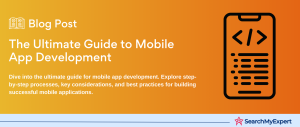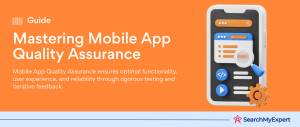What is Progressive Web Application?
Progressive Web Apps (PWAs), a revolutionary approach to web development that bridges the gap between web and mobile experiences. But what exactly are PWAs? At their core, PWAs are web applications that leverage modern web capabilities to deliver an app-like experience to users. They’re fast, reliable, and most importantly, they work offline.
Imagine browsing your favorite online store on a shaky internet connection. Traditional websites might stutter or fail to load, but a PWA ensures a smooth, uninterrupted experience. This is achieved through service workers, scripts that run in the background, enabling features like offline access and push notifications.
But PWAs aren’t just about offline capabilities. They’re designed to be responsive, fitting any form factor from desktop to mobile, and even tablet. They can be added to your home screen without the need for an app store, and they offer the kind of immersive full-screen experience previously reserved for native apps.
The rise of PWAs can be attributed to the evolving needs of the modern user. With the proliferation of mobile devices, there’s a growing demand for seamless, cross-platform experiences. PWAs answer this call, offering the flexibility of the web with the performance of native applications. For businesses, this means broader reach without the constraints of app store guidelines or the need for multiple codebases.
For a deeper dive into the world of app development, from mobile to desktop, and the tools that power them, check out these comprehensive guides on app development, mobile apps, and web apps.
Origin of PWA
The digital landscape has always been in a state of flux, with innovations emerging to address the ever-evolving needs of users. Progressive Web Apps (PWAs) are one such innovation, but where did they originate?
The Birth of an Idea: The concept of PWAs can be traced back to 2015 when Google introduced the term. However, the foundational technologies and ideas that would lead to PWAs had been brewing for years. The goal was simple: to combine the best of web and mobile apps and offer a seamless, high-quality user experience.
Service Workers – The Heart of PWAs: Service workers play a pivotal role in the functioning of PWAs. Introduced by Google engineers Alex Russell and Jake Archibald, service workers operate as a proxy between a web app and the network. They allow for features like offline access, background syncing, and push notifications, which were previously exclusive to native apps.
The Evolution of Web Capabilities: Before PWAs, web apps had limitations, especially when compared to their native counterparts. The introduction of new web APIs and capabilities, such as the Fetch API and the Cache API, paved the way for web apps to offer more dynamic and interactive experiences. These advancements set the stage for the rise of PWAs.
The Push from Tech Giants: Google wasn’t the only tech giant to recognize the potential of PWAs. Companies like Microsoft, Apple, and Mozilla began to explore and support PWA technologies. Their collective efforts have contributed to the widespread adoption and standardization of PWAs.
A Response to Changing User Behavior: The rise of mobile internet usage highlighted a significant challenge: ensuring a consistent user experience across varying network conditions. PWAs emerged as a solution, offering performance and reliability even in unstable network environments.
Incorporating Feedback: The development of PWAs has been a collaborative effort. Feedback from developers and users has been instrumental in refining and enhancing PWA capabilities. This iterative process has ensured that PWAs remain relevant and continue to meet the needs of a diverse user base.
For a deeper understanding of the different types of apps and their development processes, explore hybrid apps and the various stages of app development.
What’s the difference between Progressive Web Apps and Native Mobile Apps?
In the realm of digital applications, two prominent contenders dominate the scene: Progressive Web Apps (PWAs) and Native Mobile Apps. While both aim to provide users with a seamless experience, they differ in their approach, capabilities, and development processes. Let’s delve into the nuances that set them apart.
1. Development and Deployment:
- PWAs: Developed using standard web technologies like HTML, CSS, and JavaScript. They are accessible via web browsers, eliminating the need for app store approvals. This means faster updates and a broader reach.
- For more on web app development, see here.
- Native Apps: These are developed specifically for a platform using languages like Swift for iOS or Kotlin for Android. They require separate codebases for different platforms and must be downloaded from app stores.
- Explore the intricacies of iOS and Android development.
2. Performance and Capabilities:
- PWAs: Leveraging modern web APIs, PWAs can now access device features like geolocation, camera, and even offline capabilities. While they offer near-native performance, some advanced device features might be out of reach.
- Native Apps: Being platform-specific, they can harness the full power of the device’s hardware and software, offering optimal performance and broader capabilities.
3. User Experience:
- PWAs: They offer a consistent experience across devices and platforms. With responsive design, PWAs adapt to various screen sizes, ensuring a uniform look and feel.
- Native Apps: Tailored for specific platforms, they provide a more customized and often smoother user experience, adhering to platform-specific design guidelines.
4. Offline Access:
- PWAs: One of the standout features of PWAs is their offline capability. Service workers cache content, allowing users to access it even without an internet connection.
- Native Apps: While they inherently support offline access, the extent of offline functionality depends on the app’s design and purpose.
5. Updates and Maintenance:
- PWAs: Updates are straightforward. Developers can push changes directly, and users will experience them upon refreshing or revisiting the app.
- Native Apps: Updates need to be downloaded and installed. This can sometimes lead to fragmentation if users are on different app versions.
6. Discoverability:
- PWAs: Being web-based, they benefit from search engine visibility. Users can easily find and share them via URLs.
- Native Apps: They rely on app store visibility. Discoverability can be a challenge amidst millions of apps, requiring dedicated app marketing strategies.
In conclusion, while PWAs and Native Apps each have their strengths and weaknesses, the choice between them hinges on the specific needs and objectives of a project. Whether it’s the broad accessibility of PWAs or the tailored experience of Native Apps, understanding their differences is key to making an informed decision.
Benefits of PWAs
Progressive Web Apps (PWAs) have taken the digital world by storm, offering a unique blend of web and mobile app characteristics. Their rise in popularity isn’t just a trend; it’s backed by a plethora of benefits that cater to both businesses and end-users. Let’s explore these advantages in detail:
1. Cross-Platform Compatibility: PWAs are built using standard web technologies, ensuring they work seamlessly across various devices and platforms. Whether it’s Android, iOS, or desktop, a single version of a PWA can cater to all.
2. Cost-Effective Development: Unlike native apps that require separate codebases for different platforms, PWAs are developed once and run everywhere. This leads to significant savings in development time and costs.
3. Enhanced Performance: Thanks to modern web technologies and caching mechanisms, PWAs offer fast load times and smooth interactions, rivaling the performance of native apps.
4. Offline Access: Service workers enable PWAs to function offline or in low-network conditions, ensuring users have uninterrupted access to content.
5. No App Store Hassles: Bypassing app stores means faster updates, no approval wait times, and no sharing of revenue with app store providers.
6. Improved User Engagement: Features like push notifications keep users engaged and informed, leading to increased retention rates.
7. Easy Updates: Updates to PWAs are automatic and seamless. Users always access the latest version without needing to download updates manually.
8. Safe and Secure: PWAs are served over HTTPS, ensuring data integrity and security. Additionally, service workers act as a network proxy, safeguarding against potential threats.
9. Shareability: Being URL-based, PWAs can be easily shared through a simple link, enhancing their discoverability.
10. Responsive Design: PWAs adapt to any screen size, ensuring a consistent and optimized user experience across devices.
11. SEO Benefits: As web applications, PWAs are indexed by search engines. This improves their visibility and can lead to increased organic traffic.
For businesses contemplating their next digital venture, understanding the different types of app development can offer clarity. For instance, while PWAs offer numerous advantages, there are scenarios where hybrid apps or native solutions might be more apt.
Check out Progressive Web Apps Examples
Progressive Web Apps (PWAs) have been adopted by various industries, from e-commerce to social media, showcasing their versatility and wide-ranging benefits. Here are some standout examples of PWAs that have made a significant impact:
1. Twitter Lite: Twitter’s PWA aims to provide a faster, more data-efficient experience, especially for users in regions with limited internet connectivity. It offers core features like tweeting, reading timelines, and sending direct messages, all within a lightweight app.
2. Starbucks: The coffee giant’s PWA allows customers to browse the menu, customize orders, and add items to their cart, even offline. Once reconnected, users can finalize their orders, showcasing the power of offline functionality.
3. Pinterest: Switching to a PWA led to a significant increase in user engagement for Pinterest. The app’s faster load times and improved mobile web experience resulted in a 60% increase in core engagements and a 44% rise in user-generated ad revenue.
4. Forbes: Forbes’ PWA offers readers a visually appealing, magazine-like experience. With faster load times and an immersive reading environment, user engagement has seen a considerable boost.
5. Alibaba: The e-commerce giant adopted a PWA to cater to its vast mobile user base. The result? A 76% increase in conversions across browsers and a 14% increase in monthly active users on iOS.
6. Trivago: The hotel search engine’s PWA has features like offline access to saved hotel searches. This has led to a 150% increase in user engagement and a 97% increase in clickouts to hotel offers.
7. Lancôme: The luxury cosmetics brand saw mobile sessions increase by 53% after launching its PWA. With features like push notifications, Lancôme has managed to re-engage users and drive sales.
8. Flipkart Lite: India’s leading e-commerce platform adopted a PWA to tackle challenges like slow networks and expensive data. The result was a 70% increase in conversions and a three-fold increase in time spent on the site.
9. The Washington Post: The renowned publication’s PWA offers lightning-fast load times, ensuring readers get their news without any delays.
10. Listerine Smile Detector: This unique PWA helps blind people detect when someone is smiling at them, showcasing the diverse potential of PWAs beyond traditional applications.
These examples underscore the transformative potential of PWAs. Whether it’s enhancing user experience, driving engagement, or opening up new possibilities, PWAs are redefining the digital landscape. For a deeper dive into the world of app development and its various facets, explore the comprehensive guides on app development stages and features like push notifications.
Requirements to Get Started with PWA Development
Embarking on the journey of developing a Progressive Web App (PWA) requires a clear understanding of the prerequisites. While PWAs offer a plethora of benefits, ensuring you have the right foundation is crucial for a successful deployment. Here’s a comprehensive list of requirements to kickstart your PWA development:
1. Clear Objectives: Before diving into the technicalities, define the purpose of your PWA. Whether it’s to improve user engagement, offer offline capabilities, or enhance mobile web performance, having clear objectives will guide the development process.
2. Knowledge of Core Web Technologies: PWAs are built using standard web technologies. A strong grasp of HTML, CSS, and JavaScript is essential. Familiarity with modern JavaScript frameworks like React or Angular can be beneficial.
3. Service Workers: The heart of a PWA, service workers enable features like offline access, push notifications, and background syncing. Understanding their lifecycle and events is crucial.
4. HTTPS: For security reasons, PWAs require sites to be served over HTTPS. Ensure you have an SSL certificate for your domain.
5. Responsive Design: PWAs should offer a consistent experience across devices. Knowledge of responsive design techniques is a must.
6. Web App Manifest: This JSON file provides metadata about the app, such as its name, icons, and display properties. It allows users to add the PWA to their home screen.
7. Reliable Hosting: Choose a hosting provider that offers fast server response times and supports HTTPS.
8. Tools and Libraries: Leverage tools like Google’s Workbox, a set of libraries that simplify PWA development, or Lighthouse, an open-source tool for improving the quality of web pages.
9. Push Notifications: If your PWA will utilize push notifications, familiarize yourself with the Push API and Notification API.
10. Testing Environment: Before deploying, test your PWA across different devices and browsers to ensure compatibility and performance.
11. Continuous Learning: The world of PWAs is dynamic. Stay updated with the latest advancements, best practices, and emerging technologies.
12. Understanding of Caching Strategies: PWAs rely on caching for performance and offline capabilities. Understand different caching strategies to determine which best suits your app’s needs.
13. User Engagement Strategies: While PWAs inherently boost engagement, having strategies like periodic content updates and interactive features can further enhance user retention.
For those looking to delve deeper into the intricacies of app development, from the conception of an idea to its deployment, the comprehensive guide on app development stages offers valuable insights. Additionally, understanding tools like JavaScript and HTML5 & CSS3 can further bolster your PWA development journey.
How to Build a PWA
Building a Progressive Web App (PWA) might seem daunting, but with the right approach and tools, it can be a streamlined process. Here’s a step-by-step guide to help you navigate the journey of PWA development:
1. Define Your App’s Purpose: Before any coding begins, outline the primary objectives and functionalities you want your PWA to achieve. This clarity will guide the subsequent development stages.
2. Set Up the Development Environment: Ensure you have the necessary tools installed, such as Node.js and a code editor like Visual Studio Code. Choose a modern JavaScript framework like React or Angular to streamline the development process.
3. Create the Web App Manifest: This JSON file provides metadata about your app, allowing users to add it to their home screen. Define properties like the app’s name, icons, and display mode.
4. Implement Service Workers: Service workers are the backbone of PWAs, enabling offline capabilities and resource caching. Use tools like Google’s Workbox to simplify service worker implementation.
5. Design Responsively: Ensure your PWA looks and functions seamlessly across various devices. Use flexible grids, flexible images, and media queries to achieve a responsive design.
6. Implement Caching: Determine a caching strategy that suits your app’s needs, whether it’s cache-first, network-first, or a hybrid approach. This ensures content is available offline and loads quickly.
7. Add Push Notifications: Enhance user engagement by implementing push notifications. Integrate the Push API and Notification API to send timely updates to users.
8. Test Thoroughly: Before deploying, test your PWA on different devices and browsers. Tools like Lighthouse can help identify performance issues and areas for improvement.
9. Deploy Over HTTPS: For security and performance, ensure your PWA is served over HTTPS. Acquire an SSL certificate and choose a reliable hosting provider.
10. Continuously Update: The digital landscape is ever-evolving. Regularly update your PWA to incorporate new features, address bugs, and ensure it aligns with the latest best practices.
11. Promote and Monitor: Once deployed, promote your PWA to reach your target audience. Use analytics tools to monitor user behavior, engagement levels, and other vital metrics.
Building a PWA is a journey that requires careful planning, execution, and continuous learning. For those keen on exploring the broader world of app development, from design to deployment, the comprehensive guides on design & prototyping and development stages offer invaluable insights.
9 Advantages of PWA Apps
In the ever-evolving landscape of mobile app development, hybrid apps have carved a niche for themselves. These apps blend the best of both web and native applications, offering a unique set of advantages. Let’s delve into the nine key benefits of hybrid apps:
1. Cross-Platform Development: Hybrid apps are developed once and can be deployed across multiple platforms, such as iOS, Android, and Windows. This ensures a broader reach without the need for multiple codebases.
2. Cost-Effective: Since hybrid apps don’t require separate development for different platforms, they often result in significant cost savings in both development and maintenance.
3. Faster Time-to-Market: With a single codebase, hybrid apps can be developed, tested, and launched more quickly, allowing businesses to reach their audience faster.
4. Access to Device Features: Using plugins, hybrid apps can access device-specific features like cameras, GPS, and contacts, much like native apps.
5. Offline Capabilities: Hybrid apps can store data offline using device APIs. This ensures functionality even in areas with limited or no internet connectivity.
6. Scalability: Hybrid apps are inherently designed to be platform-independent, making them easier to scale and adapt to different devices and operating systems.
7. Seamless Updates: Updates to hybrid apps can be pushed directly to all platforms simultaneously, ensuring users always have the latest version.
8. Enhanced UI/UX: Hybrid apps offer a consistent and smooth user experience across platforms, ensuring users don’t feel a difference when switching between devices.
9. Strong Community Support: Popular hybrid app frameworks, like React Native and Flutter, boast strong developer communities. This ensures continuous improvements, abundant resources, and support.
While hybrid apps offer numerous advantages, it’s essential to understand when to opt for them over other alternatives like PWAs or native apps. For a deeper understanding of the various app development approaches, explore the comprehensive guide on hybrid apps and the differences between web apps and native apps.
PWA for eCommerce
The eCommerce industry has witnessed a paradigm shift with the advent of Progressive Web Apps (PWAs). These web applications, which combine the best of web and mobile apps, offer a myriad of benefits tailored to the unique needs of online retailers and shoppers. Let’s explore how PWAs are revolutionizing the eCommerce landscape:
1. Faster Load Times: PWAs utilize service workers and caching mechanisms to ensure rapid load times, even in low-network conditions. This leads to reduced bounce rates and enhanced user satisfaction.
2. Offline Access: Shoppers can browse products, read reviews, and even add items to their cart while offline. Once they’re back online, they can seamlessly continue their shopping journey.
3. Push Notifications: eCommerce businesses can re-engage users with timely push notifications, announcing sales, new product launches, or abandoned cart reminders.
4. Enhanced Mobile Experience: PWAs offer a mobile-app-like experience on the web, complete with smooth animations, intuitive navigation, and gesture support.
5. Improved Conversion Rates: With faster load times, a seamless user experience, and features like push notifications, PWAs have been shown to significantly boost conversion rates for eCommerce businesses.
6. Cost-Effective: PWAs eliminate the need for separate iOS and Android apps, resulting in cost savings in development, maintenance, and marketing.
7. SEO Benefits: Being web-based, PWAs are indexed by search engines. This can lead to increased organic traffic and better search rankings.
8. Cross-Platform Consistency: PWAs ensure a consistent shopping experience across devices, from desktops to smartphones, enhancing brand consistency.
9. Easy Sharing: Products or pages can be easily shared via URLs, increasing the potential for virality and user acquisition.
10. No App Store Dependencies: PWAs bypass app stores, allowing for direct user acquisition, faster updates, and no revenue sharing with app store providers.
Leading eCommerce platforms, such as Alibaba and Flipkart, have already harnessed the power of PWAs, witnessing substantial growth in user engagement and sales. For businesses contemplating their next digital move, understanding the nuances of app development for eCommerce and the potential of features like in-app purchases can offer valuable insights.
Challenges and Limitations of PWAs
While Progressive Web Apps (PWAs) have been lauded for their myriad benefits, it’s essential to understand that they’re not a one-size-fits-all solution. Like any technology, PWAs come with their own set of challenges and limitations. Let’s delve into some of these potential roadblocks:
1. Limited Access to Native Features: While PWAs can access some device features, they don’t have the extensive access that native apps enjoy. Features like advanced camera controls, in-app billing, and certain sensors might be out of reach.
2. Platform-Specific Limitations: PWAs might not offer a consistent experience across all platforms. For instance, iOS has certain restrictions on push notifications and storage for PWAs.
3. Discoverability: Though PWAs are web-based and can be indexed by search engines, they miss out on the vast user base that discovers apps through app stores.
4. Storage Limitations: PWAs rely on browser cache for storage, which can be limited. This might pose challenges for apps that need to store large amounts of data offline.
5. No Centralized Review Process: Unlike app stores that have a review process to ensure app quality, PWAs lack such centralized checks. This can lead to varied quality among PWAs.
6. Potential SEO Challenges: If not implemented correctly, PWAs can pose SEO challenges, especially if content isn’t rendered server-side.
7. User Perception: Some users might still prefer native apps due to their familiarity and perceived reliability.
8. Dependency on Browsers: The performance and capabilities of a PWA can depend on the browser it’s accessed from, leading to potential inconsistencies.
9. Initial Development Complexity: Setting up service workers and ensuring a PWA meets all criteria can be more complex than setting up a basic website.
10. Maintenance: While PWAs might be easier to maintain than separate native apps, they still require regular updates and checks to ensure compatibility and performance.
Understanding these challenges is crucial for businesses to make an informed decision. While PWAs offer numerous advantages, they might not be the best fit for every scenario. For a deeper understanding of the app development landscape, exploring the differences between web apps, native apps, and hybrid apps can provide clarity.
Conclusion: The Future of Web Apps is Progressive
In the dynamic realm of digital technology, Progressive Web Apps (PWAs) stand out as a testament to innovation and user-centric design. Merging the best of web and mobile applications, PWAs promise a seamless, efficient, and engaging user experience. Their ability to function offline, coupled with rapid load times and platform independence, makes them a formidable contender in the app development arena.
However, as with any technology, it’s essential to approach PWAs with a balanced perspective. While they offer a plethora of advantages, from cost-effectiveness to enhanced discoverability, they also come with their set of challenges. Limited access to native features and platform-specific limitations are just a few roadblocks that developers might face. Yet, the continuous evolution of web technologies and strong community support ensures that many of these challenges are temporary.
For businesses, the decision to adopt PWAs should be rooted in a clear understanding of their objectives and target audience. In scenarios where rapid market entry, cross-platform consistency, and offline capabilities are paramount, PWAs emerge as the clear winner. On the other hand, applications that rely heavily on advanced device features might still find native apps more suitable.
The links between eCommerce and PWAs are particularly noteworthy, with many online retailers witnessing significant boosts in user engagement and conversion rates after adopting PWAs. This trend underscores the importance of user experience in the digital age, where attention spans are fleeting, and expectations are perpetually on the rise.
In conclusion, while the debate between native apps, hybrid apps, and PWAs will continue, one thing is certain: the future of web apps is undeniably progressive. As technology advances and user needs evolve, PWAs will undoubtedly play a pivotal role in shaping the next chapter of digital experiences.
Embark on Your App Adventure with these App Development Companies.
Futher Reading
Table of Contents
Toggle






